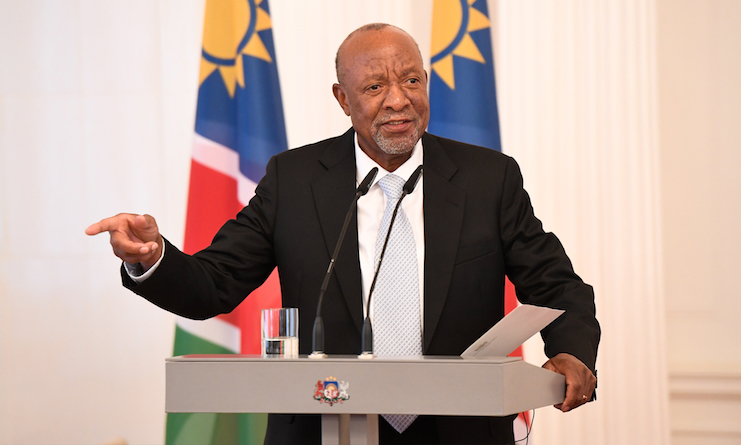ONLY five teachers are placed in mainstream schools to assist deaf pupils nationwide.
This was revealed by the Namibian National Association of the Deaf (NNAD)’s executive director, Paul Nanyeni, who pleaded with the government to provide more proficient deaf assistant teachers to improve the education level within the deaf community and promote inclusivity.
Nanyeni said the association has requested that eight assistant teachers be assigned to each school.
Deaf assistant teachers support deaf children who are integrated into mainstream schools. They collaborate with hearing teachers who teach deaf pupils to help explain instructions.
“Many times, schools recruit new hearing teachers who are not proficient or do not know a single sign, so the deaf assistant teacher will step in to convey the information in sign language, and the pupil will be able to comprehend what the teacher is saying,” said Nanyeni in an interview with The Namibian last week.
He explained that teachers do not go through proficiency tests before they are recruited to teach sign language, which ends up being extremely problematic as they are unable to convey the lesson to the pupil.
“Teachers who know a bit of sign language are assigned to teach Grade 2 children who also do not know how to sign. That is a big challenge, as they are both learning at the same time,” said Nanyeni.
“The experienced teachers often teach higher grades, while the new graduates start teaching from Grade Zero. The foundation is not well laid,” he continued.
He added that education students who are taught sign language at the University of Namibia (Unam) are taught about deaf culture and inclusive education by hearing lecturers, with no deaf assistant teacher.
This thus creates many challenges as they do not fully understand issues related to deaf culture.
“I think previously we had deaf assistant teachers at Unam, but the government did not want to pay them. The lecturer would have to teach on a voluntary basis, so they later apply at a school as deaf assistant teacher,” he said.
Nanyeni stated that despite NNAD’s countless efforts to stress the importance of having deaf assistant and sign language teachers to the education ministry and the ministry of information, their efforts have proven futile.
He said their letters to these ministries are often diverted to authorities who have no power to change anything.
“We have informed them that we need eight deaf assistant teachers for each school-four for lower primary, and four to teach upper [primary]. The assistants we have now are not enough, and are therefore overworked. They carry a big burden because teachers are circulating these assistants, asking for help as they move from one class to the next,” he noted.
Nanyeni encouraged the government to create early childhood development centres for deaf children, where deaf assistance teachers can assist in creating a better foundation for them to excel in school.
There are many challenges that emanate from a poor education system.
“It has created a repeated cycle, where our chances to succeed are literally cut off right at the early stages in life when we begin school. Many deaf people do not even finish school. Some finish school, but they do not even know how to read and write,” he said.
“They [deaf] apply for jobs and maybe out of pity, they get a job, but as a cleaner. Any other work that pays well or is in a higher position, few get,” he added.
Nanyeni added that the proposal to provide pre-vocational schooling for the deaf would still be a challenge for them because they would still not be able to follow instructions as they cannot read.
Speaking to The Namibian last week Tuesday, NNAD sign language tutor Salomon Nambandja said deaf culture has many important intrinsic components, which makes it difficult for hearing teachers to learn and teach the language.
“The challenge is that they do not understand deaf culture. How you stand, your body language, palm orientation, and facial expressions all play a role in a deaf child’s comprehension of content,” he observed.
Nambandja said there is a direct link between teachers’ proficiency in sign language and the failure rate of deaf pupils. Pupils tend to perform better when a deaf teacher is teaching.
“The high failure rate is a serious case of concern. They tend to get G’s and F’s every year, and there is just no improvement. Last year, no deaf students passed, and I think it is because of the way teachers convey the information to the pupils,” he continued.
Nanyeni said it would be better if deaf teachers taught deaf children, as they understand them better. However, due to the low marks obtained by deaf pupils, there are no deaf teachers because they are unable to access university. Hilma Nangombe (21), a former pupil at the Eluwa Special School, told The Namibian last week that she ended school in Grade 10 as she only obtained 14 points.
She has been at the Namibian College of Open Learning for the past three years to improve her English, and has now achieved 23 points. “I failed English three times. The challenge I had was that they [teachers] could not use sign language, so I didn’t really grasp it. I feel like teachers do not know how to sign, especially when it comes to teaching English. Deaf people therefore have a tough time learning English as a language,” said Nangombe.
“The problem is that deaf assistant teachers are not there full-time, so I was unable to clearly comprehend what the teachers were saying,” she continued.
“I had 22 points, which was one of the highest amongst my classmates. Most of them get around 14 points or less. Quite a few of my classmates had to drop out due to low marks,” she said.
Stay informed with The Namibian – your source for credible journalism. Get in-depth reporting and opinions for
only N$85 a month. Invest in journalism, invest in democracy –
Subscribe Now!






